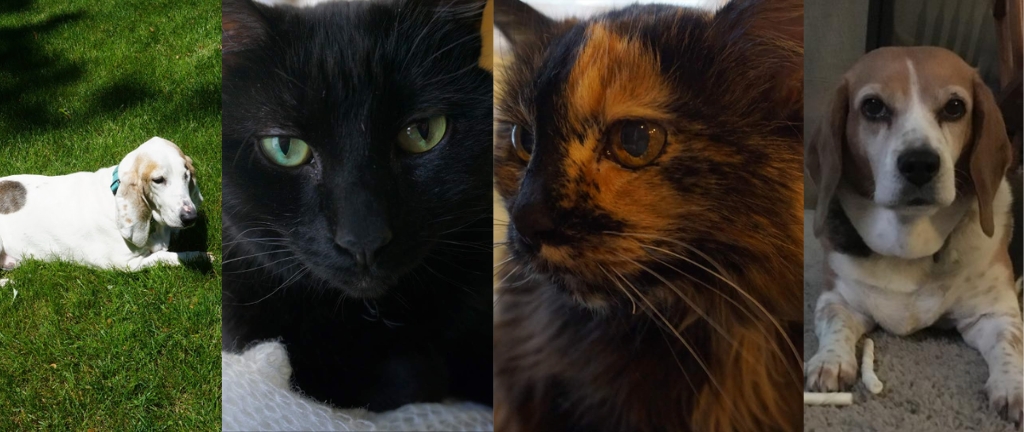Pet Food Red Flags & Healthier Picks
Key Ingredients to Avoid & Simple Ways to Boost Your Pet’s Nutrition
It’s Madame Midni9ht Mandarin here!
In this blog, I’ll be sharing key ingredients that pet parents should limit or avoid in large amounts, especially if their pets have existing health conditions like digestive issues, food sensitivities, neurological disorders, skin and coat problems, or joint pain.
I understand that budget and convenience can be a challenge, so I’ll also provide practical tips to help reduce harmful ingredients in your pet’s diet while still creating a balanced, satisfying meal.
Ingredients to Avoid in Large Amounts

Preservatives & Additives
- BHA & BHT – Artificial preservatives linked to potential health risks.
- Ethoxyquin – Found in fish-based pet food, linked to toxicity.
- Sodium Nitrate & Sodium Nitrite – Preservatives that may pose serious health risks.
- Melamine – A chemical additive associated with kidney damage.
Artificial Colors & Sweeteners
- Artificial Colors (Red 40, Blue 2, Yellow 5 & 6) – May contribute to hyperactivity and toxicity.
- Propylene Glycol – Artificial sweetener, harmful in excess.
- Corn Syrup & Added Sugars – Can contribute to obesity and diabetes.
- MSG (Monosodium Glutamate) – Flavor enhancer linked to allergies and neurological effects.
Low-Quality Proteins & Meat By-Products
- Meat By-Products – Low-nutritional leftover animal parts.
- Rendered Meat & Animal Fat – Poor-quality, processed ingredients from unknown sources.
- Hydrolyzed Protein – Heavily processed and lower quality.
Fillers & Unnecessary Ingredients
- Rice Bran – Offers little nutritional value.
- Corn, Soy, Wheat – Common allergens with minimal health benefits.
- Cellulose – Indigestible fiber often derived from wood pulp.
Unhealthy Oils & Fats
- Seed Oils (Vegetable, Canola, Cottonseed, Palm, Sunflower, etc.) – Can contribute to inflammation and poor coat health.
- Glycerin – Often derived from petroleum, lacks nutritional value.
Harmful Thickeners & Flavor Enhancers
- Carrageenan – Can cause digestive issues.
- Garlic & Onion Powder – Toxic to pets, can lead to anemia over time.
Budget-Friendly Pet Food Recommendations
✅ Dr. Pol Limited Ingredient (Dog & Cat – Wet & Dry)
✅ Instinct (Dog & Cat – Wet & Dry)
✅ Blue Buffalo Basics (Dog & Cat – Dry Only)
✅ Natural Balance (Dog & Cat – Dry Only) (Dog food contains canola oil as a top ingredient but is free of grains, allergens, and artificial additives.)
Simple & Nutritious Add-Ons for Pet Meals
If you want to boost your pet’s nutrition while keeping meals enjoyable, here are safe and healthy food toppers:
🐶 For Dogs:
- Homemade or Nulo brand bone broth – Adds hydration & flavor.
- Nulo meal enhancers – Variety of flavors.
- Eggs (scrambled or hard-boiled) – Choose pasture-raised or locally sourced.
- Steamed or frozen zucchini & green beans – Nutrient-rich veggies.
- Pumpkin – Supports digestion.
- Fresh tuna or sardines
- Canned tuna or sardines (in water only, no added salt)
- Cooked & mashed sweet potato – Great source of fiber.
🐱 For cats:
- Homemade or Merrick brand bone broth – Adds nutrients & hydration.
- Nulo meal enhancers – Variety of flavors.
- Fresh tuna or sardines
- Canned tuna or sardines (in water only, no added salt)
- Cooked & mashed sweet potato – Occasional fiber boost.
FINAL THOUGHTS
I hope this blog helps pet parents make informed choices about avoiding harmful ingredients while still creating healthy, delicious meals for their pets.
Feel free to email me at midni9htmandarin@gmail.com—first four questions are free for new clients!
Peace, Love, & Light.



